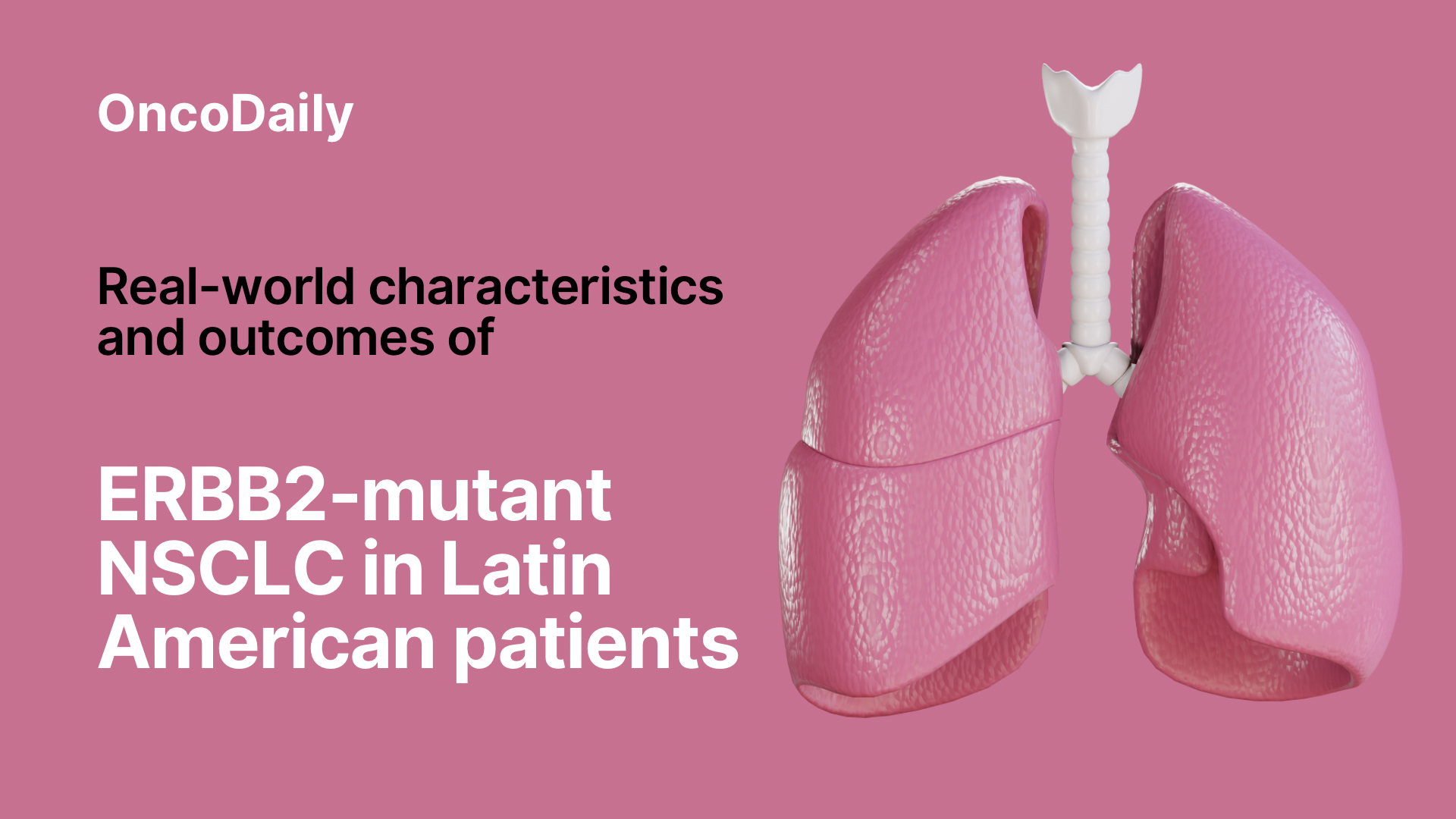Recently an article Erick F Saldanha and colleagues authored was published in The Oncologist.
Real-world characteristics and outcomes of ERBB2-mutant NSCLC in Latin American patients (CLICaP)
Authors: Erick F Saldanha et al.

The study investigates the clinical characteristics, treatment patterns, and outcomes of patients with ERBB2-mutant non-small cell lung cancer (NSCLC) in Latin America. A cohort of 35 patients from Brazil, Colombia, and Mexico was analyzed to evaluate the incidence and clinical features of ERBB2 mutations in advanced NSCLC. ERBB2 mutations were identified in 2.8% of patients, with most mutations being exon 20 insertions.
The study found that these mutations were more common in females and never-smokers with low tumor mutational burden (TMB) and adenocarcinoma histology. Most patients received chemotherapy combined with immune checkpoint blockade (ICB) as first-line therapy, and the median progression-free survival (PFS) was 6.7 months.
The median overall survival (OS) was 25.9 months, with PD-L1 expression being a significant predictor of longer OS. The study highlights the limited real-world evidence on ERBB2-mutant NSCLC in Latin American populations, pointing to the need for further research on treatment options and outcomes in this demographic.
Key Points:
- Study Objective: Evaluate the incidence, clinical characteristics, and treatment outcomes of ERBB2-mutant NSCLC in Latin American patients.
- Incidence and Demographics: 2.8% of patients in the study had ERBB2 mutations. The cohort was predominantly female (54.2%), with a significant number of never-smokers (62.8%).
- Genomic Features: The most common ERBB2 mutation was exon 20 insertions, with co-mutations in TP53 and CDKN2A/B.
- Treatment Patterns: Most patients (74.2%) received chemotherapy plus immune checkpoint blockade (ICB). Trastuzumab emtansine was used in 42.8% of patients as a second-line treatment.
- Clinical Outcomes: Median progression-free survival (PFS) was 6.7 months, and median overall survival (OS) was 25.9 months. PD-L1 expression was associated with longer OS.
- Real-World Data: The study is the first and largest real-world cohort in Latin America focusing on ERBB2-mutant NSCLC, offering critical insights for therapeutic decision-making in this population.
- Treatment Efficacy: Despite receiving ICB, the overall survival outcomes were moderate, and there is a need for better-targeted therapies for ERBB2-mutant NSCLC.
- Research Gaps: There is limited evidence on ERBB2-targeted therapies for Latin American populations, underlining the need for further studies and better access to novel treatments.
